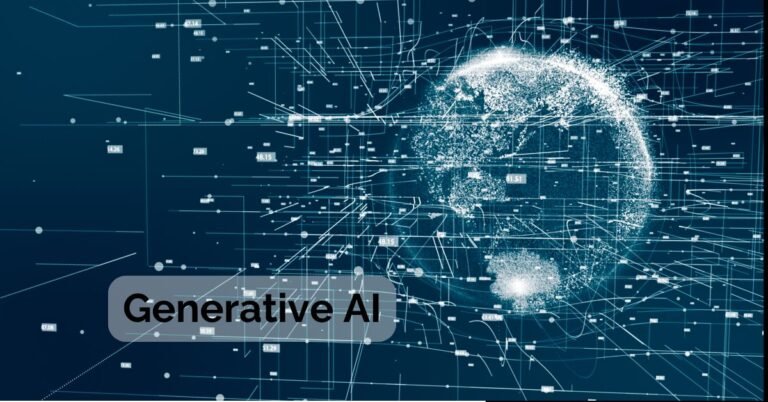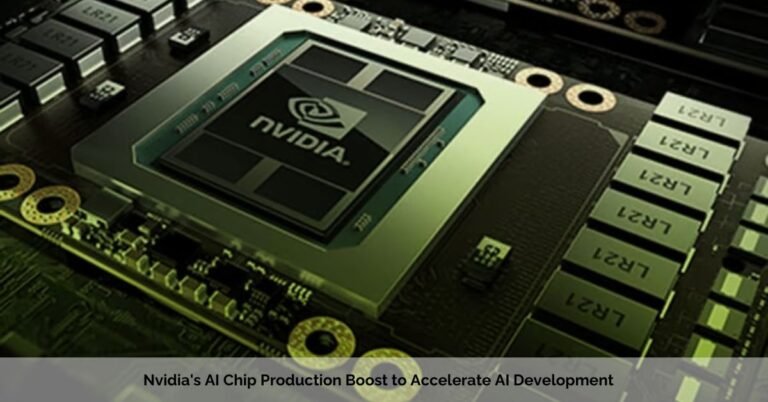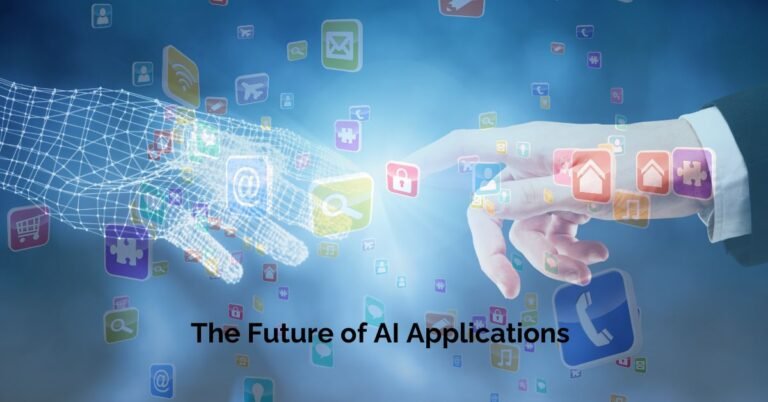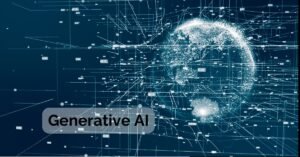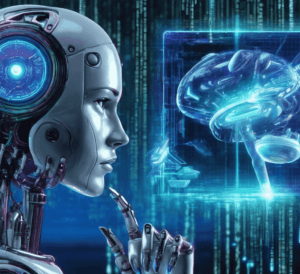Written by Ayesha Arkash
What is machine learning?
Machine learning is a subfield of artificial intelligence that focuses on the development of systems that can learn from data without being explicitly programmed. In layman’s terms, it’s about teaching computers to “learn” by analyzing large amounts of data and identifying patterns to make predictions or decisions.
Here’s a breakdown of the key characteristics of machine learning:
- Learning from data: Machine learning algorithms are trained on large datasets, allowing them to identify patterns and relationships within the data.
- No explicit programming: Unlike traditional programming, machine learning algorithms don’t require detailed instructions for every situation. They learn and adapt their behavior based on the data they encounter.
- Making predictions: Once trained, machine learning models can be used to make predictions on new data. This can be used for tasks such as classification (e.g., spam filtering), regression (e.g., predicting future sales), and anomaly detection (e.g., identifying fraudulent activities).
Why is machine learning important?
Machine learning is revolutionizing various industries due to its ability to:
- Automate tasks: Machine learning can automate repetitive and time-consuming tasks, freeing up human resources for more strategic work.
- Improve decision-making: Machine learning models can analyze vast amounts of data and identify insights that humans might miss, leading to better-informed decisions.
- Personalization: Machine learning can personalize user experiences by tailoring recommendations, content, and services to individual preferences.
- Innovation: Machine learning drives innovation across various fields, including healthcare, finance, retail, and manufacturing.
As machine learning technology continues to evolve, its impact is expected to become even more significant in the future.
Types of machine learning:
1. Supervised Learning:
Supervised learning is a fundamental type of machine learning where algorithms learn from labeled datasets. This means that each data point has a desired output associated with it. The algorithm then iteratively analyzes these data points and learns the relationship between the inputs and outputs. Once trained, the model can predict the desired output for new, unseen data.
Explanation of Supervised Learning:
- Data Preparation: The first step involves preparing the training data. This includes cleaning, pre-processing, and formatting the data to ensure it’s compatible with the chosen algorithm.
- Model Selection: Based on the task and data characteristics, a suitable supervised learning algorithm is selected. Some standard algorithms include:
- Regression: Used for predicting continuous outputs, like house prices or stock prices. Examples include linear regression, gradient boosting, and lasso regression.
- Classification: Used for predicting discrete outputs, such as spam/not spam or cat/dog. Examples include logistic regression, decision trees, and support vector machines (SVM).
- Model Training: The chosen algorithm is trained on the labeled dataset. During this process, the model adjusts its internal parameters to minimize the error between its predictions and the actual outputs.
- Evaluation and Improvement: Once trained, the model’s performance is evaluated using metrics like accuracy, precision, and recall. Based on the evaluation, the model can be further improved through techniques like hyperparameter tuning and feature engineering.
- Prediction: Finally, the trained model can be used to predict the desired output for new, unseen data.
Real-world examples of supervised learning applications:
- Spam filtering: Classifying emails as spam or not spam based on content analysis.
- Fraud Detection: Identifying fraudulent financial transactions based on historical data.
- Medical diagnosis: Predicting the likelihood of a disease based on medical records and symptoms.
- Customer segmentation: Grouping customers based on their behavior and demographics for targeted marketing campaigns.
- Recommendation systems: Suggesting relevant products or services to users based on their past purchases and browsing history.
Supervised learning is a powerful tool for various tasks that involve learning from labeled data. Its effectiveness and widespread applications make it a crucial building block in the landscape of machine learning.
2. Unsupervised Learning
Unsupervised learning is a branch of machine learning where algorithms learn from unlabeled data, meaning there are no pre-defined outputs associated with the data points. This type of learning allows models to discover hidden patterns and relationships within the data without explicit guidance.
Explanation of Unsupervised Learning:
- Data Preparation: Similar to supervised learning, the data needs to be prepared and formatted for analysis. Data cleaning, normalization, and feature engineering might be necessary depending on the chosen algorithm.
- Algorithm Selection: Various unsupervised learning algorithms can be employed depending on the desired outcome. Common examples include:
- Clustering: Grouping similar data points based on their features without prior knowledge of the categories. Examples include K-means clustering, hierarchical clustering, and density-based spatial clustering of applications with noise (DBSCAN).
- Dimensionality Reduction: Reducing the number of features in the data while preserving the essential information. This helps with data visualization and improves the performance of other machine-learning algorithms. Examples include principal component analysis (PCA) and t-distributed stochastic neighbor edging (t-SNE).
- Anomaly Detection: Identifying data points that deviate significantly from the norm, indicating potential outliers or anomalies. Examples include K-nearest neighbors (KNN) and Isolation Forests.
- Model Training: Unsupervised algorithms learn by iteratively analyzing the data and identifying patterns or relationships within it. This process usually involves optimizing internal parameters to maximize the desired outcome metric for each algorithm.
- Evaluation and Interpretation: Evaluating the performance of unsupervised learning models can be challenging due to the need for labeled data. However, metrics like silhouette score for clustering and reconstruction error for dimensionality reduction can provide insights into the effectiveness of the learned patterns. Interpreting the results often involves visualizing the clusters, identifying the most representative features, and analyzing the relationships between data points.
- Application: The discovered patterns and relationships can be used for various purposes, such as:
- Customer segmentation: Grouping customers with similar behavior for targeted marketing campaigns.
- Market research: Identifying trends and preferences within customer data.
- Fraud detection: Identifying anomalous patterns that might indicate fraudulent activities.
- Image segmentation: Grouping similar pixels in an image based on color, texture, or other characteristics.
Real-world examples of unsupervised learning applications:
- Recommendation systems: Recommending movies to users based on their past viewing history, grouping movies with similar themes or genres.
- Social network analysis: Grouping users with similar profiles or interests, identifying communities within a network.
- Image compression: Removing redundant information from images while preserving visual quality, using techniques like PCA or K-means clustering.
- Gene clustering: Grouping genes with similar expression patterns, identifying genes potentially related to specific diseases or biological functions.
- Anomaly detection in network traffic: Identifying unusual activity in network traffic that might indicate a cyber attack or equipment failure.
Unsupervised learning offers a powerful way to uncover hidden structures and relationships within data, allowing for diverse applications across various fields. Its ability to handle unlabeled data makes it particularly valuable for situations where labeled data is scarce or expensive to obtain.
3. Semisupervised Learning:
Semisupervised learning is a hybrid approach that combines the strengths of both supervised and unsupervised learning. It leverages a small amount of labeled data, along with a large amount of unlabeled data, to improve the performance of machine learning models.
Explanation of Semisupervised Learning:
- Data Preparation: As with other methods, data preparation is crucial. Both labeled and unlabeled data need to be pre-processed and formatted for analysis.
- Algorithm Selection: Specific algorithms are designed for semisupervised learning, such as:
- Self-training: The model initially learns from the labeled data. Then, it confidently predicts labels for the unlabeled data and adds these predictions as pseudo-labeled data to the training set, iteratively refining its predictions.
- Co-training: Two models are trained simultaneously, each using different features of the data. These models then make predictions for the unlabeled data, reinforcing each other’s learning through agreement.
- Graph-based methods: These methods represent the data points as a graph, where edges connect similar data points. The model then exploits the structure of the graph to propagate labels from labeled data points to unlabeled ones.
- Model Training: Semisupervised algorithms use both labeled and unlabeled data to learn the underlying patterns and relationships in the data. This allows them to overcome the limitations of supervised learning when labeled data is scarce.
- Evaluation and Improvement: Evaluating the performance of semisupervised models can be challenging due to the additional uncertainty introduced by the pseudo-labeled data. Metrics like accuracy, precision, and recall can still be used, but additional validation techniques might be necessary.
- Applications: Semisupervised learning offers several advantages, including:
- Improved performance: Leveraging unlabeled data can significantly improve the performance of machine learning models compared to using only labeled data.
- Reduced labeling cost: Labeling data can be expensive and time-consuming. Semisupervised learning can reduce the amount of labeled data needed to achieve good results.
- Enhanced model generalizability: Semisupervised models can learn more generalizable patterns and relationships that are less prone to overfitting.
Despite these drawbacks, semisupervised learning remains a valuable tool for machine learning practitioners, especially when dealing with limited labeled data and large amounts of unlabeled data. Its ability to leverage both labeled and unlabeled data offers promising opportunities for various applications across numerous domains.
Machine Learning vs. Deep Learning Neural Networks:
Although often used interchangeably, machine learning and deep learning are distinct concepts within the field of artificial intelligence. Here’s a breakdown of their fundamental differences and when to use each approach:
Key Differences
While both machine learning and deep learning fall under the umbrella of artificial intelligence, they’re not the same. Here’s a breakdown of their key differences:
Machine Learning:
- Learning Approach: Diverse algorithms, often more straightforward and easier to understand.
- Data Requirements: Can work with smaller datasets.
- Feature Engineering: Often requires manual feature engineering.
- Interpretability: It is easier to interpret and explain the model’s behavior.
- Applications: Broad range, including more straightforward tasks like regression and classification.
Deep Learning:
- Learning Approach: Inspired by the human brain, utilizing complex neural networks.
- Data Requirements: Requires large amounts of data for practical training.
- Feature Engineering: Can automatically learn features from raw data.
- Interpretability: It is more challenging to understand the inner workings of the model.
- Applications: Particularly well-suited for complex tasks like image recognition and natural language processing.
Choosing the right approach:
The choice between them depends on the following:
- Nature of the problem: Complex tasks with large datasets favor deep learning.
- Data availability: Limited data might necessitate machine learning.
- Interpretability needs: Need to understand the model? Choose machine learning.
- Computational resources: Deep learning requires significant resources.
Remember: They can be combined! Deep learning features can feed conventional machine learning algorithms.
Ultimately, the best approach depends on the specific problem and context. Understanding their differences will help you choose wisely.
When to use Machine Learning:
- When data is limited or expensive to acquire
- When the interpretability of the model is crucial
- For more straightforward tasks like linear regression or decision tree-based classification
- When computational resources are constrained
When to use Deep Learning:
- When large datasets are available
- For complex tasks involving unstructured data like images, text, and audio
- When feature engineering is impractical or ineffective
- When high accuracy and performance are paramount
Choosing the right approach:
The choice between machine learning and deep learning depends on several factors:
- Nature of the problem: Consider the complexity of the task and the type of data involved.
- Data availability: Assess the quantity and quality of available data.
- Interpretability needs: Determine whether you need to understand the model’s inner workings.
- Computational resources: Consider the hardware and software resources available for training and deploying the model.
Machine learning and deep learning are not mutually exclusive. They can be combined to leverage the strengths of both approaches. For instance, deep learning models can be used to extract features from raw data, which can then be fed into traditional machine learning algorithms for further processing and analysis.
Ultimately, the best approach depends on the specific problem and context. Understanding the key differences and strengths of both machine learning and deep learning will equip you to make informed decisions and achieve optimal results for your specific needs.
Building and optimizing ML models:
Training and Evaluating Machine Learning Models:
Building successful machine learning models requires careful training and evaluation. This process involves several crucial steps:
Data Pre-processing:
Before feeding data into any machine learning algorithm, it needs to be cleaned and pre-processed. This includes:
- Handling missing values: Missing data can be attributed using various techniques like mean or median imputation, depending on the data type and distribution.
- Outlier detection and removal: Outliers can significantly affect the performance of machine learning models. Identifying and removing outliers can improve training stability and model generalizability.
- Feature scaling: Different features might have different scales, which can lead to bias during training. Scaling features to a standard range ensures all features contribute equally to the learning process.
- Feature engineering: Creating new features from existing ones can improve the model’s ability to capture complex relationships within the data.
Choosing the Right Algorithm:
Selecting the most suitable machine learning algorithm for the task is crucial. Factors to consider include:
- Nature of the problem: Is it a classification, regression, clustering, or another type of problem?
- Data type: Is the data structured (e.g., tables) or unstructured (e.g., images, text)?
- Data size: Is there a large amount of data available for training?
- Computational resources: How much processing power and memory are available?
- Interpretability needs: Is it essential to understand the model’s inner workings?
Train, Validation, and Test Sets:
The data should be divided into three separate sets:
- Training set: Used to train the model and learn the underlying patterns in the data.
- Validation set: Used to fine-tune the model’s hyperparameters and prevent overfitting.
- Test set: Used to evaluate the final performance of the model on unseen data.
Evaluation Metrics:
To assess the performance of a machine learning model, various metrics are used. Some standard metrics include:
- Accuracy: Overall percentage of correctly predicted labels.
- Precision: Proportion of positive predictions that are actually correct.
- Recall: Proportion of actual positive cases that are correctly predicted.
- F1 score: Harmonic mean of precision and recall.
- R-squared: Coefficient of determination for regression tasks, indicating the model’s ability to explain the variance in the target variable.
Choosing the appropriate metrics depends on the specific task and the desired outcome.
Additional Considerations:
- Hyperparameter tuning: Adjusting the model’s hyperparameters can significantly impact its performance. Techniques like grid search and random search can be used to find the optimal hyperparameter settings.
- Regularization: Techniques like L1 and L2 regularization prevent overfitting by penalizing complex models.
- Cross-validation: Evaluating the model on multiple train-test splits can provide a more reliable estimate of its generalizability.
By carefully considering these aspects of training and evaluation, you can build robust and effective machine-learning models that achieve the desired outcome for your specific application.
Optimizing Model Performance:
Once you’ve trained a machine learning model, it’s crucial to optimize its performance to ensure it achieves the best possible results. Here are three key techniques to achieve this:
1. Hyperparameter Tuning:
Hyperparameters are parameters within the model itself that are not directly learned from the data. Examples include:
- Learning rate in gradient descent algorithms.
- The number of hidden layers in a neural network.
- The regularization parameter.
Tuning these hyperparameters can significantly impact the model’s performance.
Several techniques exist for hyperparameter tuning:
- Grid search: Evaluates the model for a pre-defined set of hyperparameter values.
- Random search: Efficiently explores an ample space of hyperparameter values by randomly sampling different combinations.
- Bayesian optimization: It uses a statistical model to select promising hyperparameter configurations iteratively based on previous evaluations.
2. Feature Engineering:
Feature engineering involves creating new features from existing ones or transforming existing features to improve the model’s ability to capture relevant patterns in the data. This can involve:
- Feature selection: Identifying the most relevant features for the task and removing irrelevant ones.
- Feature extraction: Creating new features by combining existing ones or applying dimensionality reduction techniques.
- Feature scaling: Transforming features to a standard scale to prevent biases during training.
Practical feature engineering can significantly improve the model’s performance, especially when dealing with complex datasets with high dimensionality.
3. Model Selection:
Sometimes, the chosen machine learning algorithm itself might not be the best fit for the specific task and data. Evaluating different algorithms and comparing their performance is crucial to ensuring optimal results. This involves:
- Experimenting with different algorithms: Trying various algorithms like linear regression, decision trees, or neural networks to see which one performs better.
- Ensemble methods: Combining multiple models into a single ensemble model often leads to improved performance compared to individual models.
- Meta-learning: Using machine learning algorithms to choose the best algorithm for a specific task automatically.
Choosing the most appropriate model selection strategy depends on the resources available, the complexity of the task, and the need for interpretability and explainability.
Additional Tips:
- Data Augmentation: Creating artificial variations of existing data points can help improve the model’s generalizability and robustness.
- Early Stopping: Stopping the training process before overfitting occurs can prevent the model from learning irrelevant patterns from the training data.
- Regularization: Techniques like L1 and L2 regularization penalize complex models, reducing overfitting and improving generalizability.
By employing these optimization techniques, you can extract maximum performance from your machine learning models, leading to better results and achieving your desired objectives.
Applications of machine learning:
Machine Learning Applications for Enterprises:
Machine learning offers a powerful toolkit for businesses to enhance their operations and gain a competitive edge. Here are some key applications:
1. Customer Segmentation and Targeting:
- Segmenting customers based on demographics, behavior, and preferences: This allows for targeted marketing campaigns, personalized recommendations, and optimized pricing strategies.
- Identifying high-value customers: Machine learning can predict customer lifetime value, enabling businesses to prioritize resources and allocate efforts effectively.
- Churn prediction and prevention: Models can identify customers at risk of leaving, allowing companies to address their concerns and offer incentives to remain engaged proactively.
2. Fraud Detection and Risk Management:
- Identifying fraudulent transactions in real-time: Machine learning models can analyze financial transactions and identify patterns indicative of fraud, preventing financial losses.
- Credit risk assessment: Predicting the likelihood of loan defaults allows lenders to make informed decisions and manage credit risk effectively.
- Cybersecurity threat detection: Machine learning algorithms can analyze network traffic and identify anomalies that might indicate cyberattacks, protecting sensitive data and systems.
3. Predictive Maintenance and Anomaly Detection:
- Predicting equipment failures: Analysing sensor data and historical maintenance records allows for preventive maintenance, reducing downtime and improving equipment lifespan.
- Identifying anomalies in production processes: Machine learning can detect deviations from normal operating conditions, enabling early intervention and minimizing production losses.
- Optimizing maintenance schedules: Predictive models can determine the optimal time for maintenance based on equipment health and usage, reducing unnecessary maintenance costs.
4. Process Optimization and Automation:
- Automating repetitive tasks: Machine learning can automate tedious and time-consuming tasks, freeing up human resources for more strategic work.
- Optimizing supply chains: Predicting demand fluctuations and optimizing logistics routes can lead to significant cost savings and improved efficiency.
- Improving resource allocation: Machine learning models can analyze resource utilization and suggest efficient allocation strategies to optimize productivity and performance.
5. Recommendation Systems:
- Personalizing product recommendations for customers: Analysing purchase history and user preferences allows for targeted recommendations, improving customer satisfaction and driving sales.
- Content personalization: Recommending relevant content based on user interests and past interactions enhances user engagement and improves platform stickiness.
- Dynamic pricing: Setting prices based on individual customer profiles and market conditions can optimize revenue generation and maximize profitability.
These are just a few examples of the vast potential of machine learning in business. As the technology continues to evolve, its applications are likely to become even more pervasive and transformative across industries.
- Machine learning examples in industry:
- Healthcare (diagnosis, drug discovery)
- Finance (fraud detection, credit scoring)
- Retail (product recommendations, pricing optimization)
- Manufacturing (predictive maintenance, quality control)
- Media and entertainment (personalization, content recommendations)
Machine learning examples in industry:

1. Healthcare:
- Diagnosis: Machine learning algorithms can analyze medical images and data to assist in disease diagnosis. For example, AI algorithms can analyze X-rays or CT scans to identify abnormalities that might be indicative of cancer, reducing diagnostic errors and improving patient outcomes.
- Drug discovery: Machine learning can accelerate the drug discovery process by analyzing large amounts of data to identify promising drug candidates and optimize clinical trials. This can lead to faster development of new drugs and treatments for diseases.
2. Finance:

- Fraud detection: Machine learning models can analyze financial transactions in real-time to identify patterns and anomalies indicative of fraudulent activity. This helps protect financial institutions and consumers from financial losses.
- Credit scoring: Machine learning algorithms can analyze credit data to assess the risk of default for borrowers. This allows lenders to make more informed decisions about loan approvals and interest rates.
3. Retail:
- Product recommendations: Machine learning can analyze customer purchase history and browsing behavior to recommend products they are likely to be interested in. This can lead to increased customer satisfaction and sales.
- Pricing optimization: Machine learning models can analyze market data and customer behavior to set optimal prices for products. This can maximize profits for retailers while still attracting customers.
4. Manufacturing:
- Predictive maintenance: Machine learning algorithms can analyze sensor data from equipment to predict potential failures before they occur. This enables preventive maintenance, reducing downtime and improving equipment lifespan.
- Quality control: Machine learning can analyze product images and data to identify defects and ensure quality control. This can improve product quality and reduce production costs.
5. Media and entertainment:
- Personalization: Machine learning can personalize content recommendations for users based on their past viewing history and preferences. This leads to a better user experience and can increase engagement and retention.
- Content creation: Machine learning can be used to create new forms of content, such as personalized news feeds or music playlists. This can provide users with a more immersive and tailored experience.
These are just a few examples of how machine learning is being used across various industries. As technology continues to evolve, we can expect to see even more innovative applications emerge in the future.
Future of machine learning:
Emerging Trends and Technologies in Machine Learning:
Machine learning is a rapidly evolving field, constantly pushing the boundaries of what’s possible. Here are some of the most exciting emerging trends and technologies:
1. Explainable AI (XAI):
Traditionally, many machine learning models are “black boxes,” making it difficult to understand how they arrive at their decisions. XAI aims to address this by developing techniques that explain the predictions and reasoning behind a model’s decisions. This is crucial for ensuring transparency, accountability, and trust in AI systems, especially when dealing with high-stakes decisions.
2. Responsible AI:
As AI becomes increasingly integrated into society, it’s critical to ensure its development and use are responsible and ethical. Responsible AI focuses on mitigating potential biases, ensuring fairness and non-discrimination, and protecting privacy. This includes implementing rigorous testing and evaluation procedures, establishing ethical guidelines, and developing robust data governance practices.
3. Edge computing:
Traditionally, machine learning models have been trained and deployed in centralized cloud environments. However, edge computing enables models to be trained and run on devices at the edge of the network, closer to where the data is generated. This offers several advantages, including lower latency, improved privacy, and better resource utilization.
4. Quantum computing:
While still in its early stages, quantum computing has the potential to revolutionize machine learning. Quantum computers can perform certain computations exponentially faster than classical computers, opening doors for solving complex problems that are currently intractable. This could lead to breakthroughs in areas like drug discovery, materials science, and artificial intelligence.
Additional noteworthy trends:
- Federated learning: Enables collaborative training of models across multiple devices without sharing raw data, improving privacy and data security.
- Transfer learning: Leverages knowledge gained from one task to improve performance on another, accelerating model development and deployment.
- Self-supervised learning: Enables models to learn from unlabeled data, expanding the scope of applications and reducing the reliance on labeled data, which can be expensive and time-consuming to acquire.
These emerging trends and technologies have the potential to significantly impact the landscape of machine learning and its applications across various industries and domains. As they continue to evolve and mature, they will shape the future of AI and its impact on society.
Impact on Society and Ethics:
While machine learning advancements hold immense promise, their impact on society necessitates careful consideration of ethical implications. Here are some key concerns:
1. Job Automation:
One major concern is the potential for widespread job automation due to machine learning. As algorithms become increasingly capable of performing tasks previously requiring human intelligence, some jobs may be eliminated, leading to unemployment and economic disruption. This necessitates proactive measures to address potential workforce displacement, such as retraining programs and social safety nets.
2. Bias and Discrimination in Algorithms:
Machine learning algorithms are trained on data, which can reflect existing societal biases. This can lead to discriminatory outcomes, perpetuating inequalities in areas like hiring, loan approvals, and criminal justice. Ensuring that training data is diverse and representative, implementing fairness metrics, and auditing algorithms for bias are crucial steps toward mitigating this risk.
3. Privacy Concerns:
Machine learning models often rely on large amounts of personal data, raising concerns about privacy and data security. Robust regulations and ethical guidelines must govern the collection, storage, and use of this data. Individuals should have control over their data and be informed about how it is being used.
Additional ethical considerations:
- Transparency and explainability: As mentioned previously, ensuring transparency and explainability in AI systems is critical for building trust and allowing for accountability.
- Algorithmic accountability: When algorithms make decisions that have significant consequences, there should be precise mechanisms for understanding and challenging those decisions.
- Weaponization of AI: The potential for malicious use of AI for surveillance, manipulation, and warfare raises serious ethical concerns. International collaboration and strong regulations are critical to mitigate these risks.
Navigating the Future:
Addressing these ethical challenges requires a multi-pronged approach:
- Collaboration: Developers, policymakers, academics, and civil society organizations need to work together to develop ethical guidelines and best practices for AI development and deployment.
- Public education: Raising public awareness about the potential benefits and risks of AI is crucial for fostering informed discussions and shaping responsible development.
- Investment in research: Continued research into areas like XAI, fairness-aware algorithms, and privacy-preserving techniques is essential for developing ethical and trustworthy AI systems.
By proactively addressing these issues, we can harness the power of machine learning for the benefit of society while mitigating potential harms. This requires a commitment to responsible development and deployment, ensuring that AI serves as a tool for progress and not a source of harm and inequality.
Conclusion:
Machine learning is a transformative technology with a profound impact across various industries and aspects of our lives. This field is rapidly evolving, pushing the boundaries of what’s possible and opening doors to a future filled with both opportunities and challenges.
Here are some key takeaways from our discussion:
Key Takeaways:
- Machine learning is a powerful tool for solving complex problems and making informed decisions.
- Different types of machine learning algorithms exist, each suited for specific tasks and data types.
- Training and evaluating models involves several crucial steps, including data pre-processing, hyperparameter tuning, and model selection.
- Machine learning applications are widespread across various industries, including healthcare, finance, retail, manufacturing, and media.
- Emerging trends like XAI, responsible AI, edge computing, and quantum computing have the potential to revolutionize machine learning further.
- Ethical considerations regarding job automation, bias, and privacy are crucial for ensuring the responsible and beneficial development of AI.
Future Potential and Challenges:
Machine learning holds immense potential for solving some of the world’s most pressing challenges, from climate change and healthcare to poverty and education. However, it also presents significant challenges that need to be addressed:
- Ethical concerns: Ensuring fairness, transparency, and accountability in AI systems.
- Job displacement: Mitigating potential negative impacts of automation on the workforce.
- Data privacy: Protecting individual privacy and ensuring responsible data use.
- Algorithm explainability: Understanding and explaining how algorithms make decisions.
- Regulation: Developing effective policies and regulations for AI development and deployment.
Addressing these challenges requires a collaborative effort from researchers, developers, policymakers, and the public. By working together, we can harness the power of machine learning for the benefit of humanity and ensure responsible and ethical development for a brighter future. Read More




